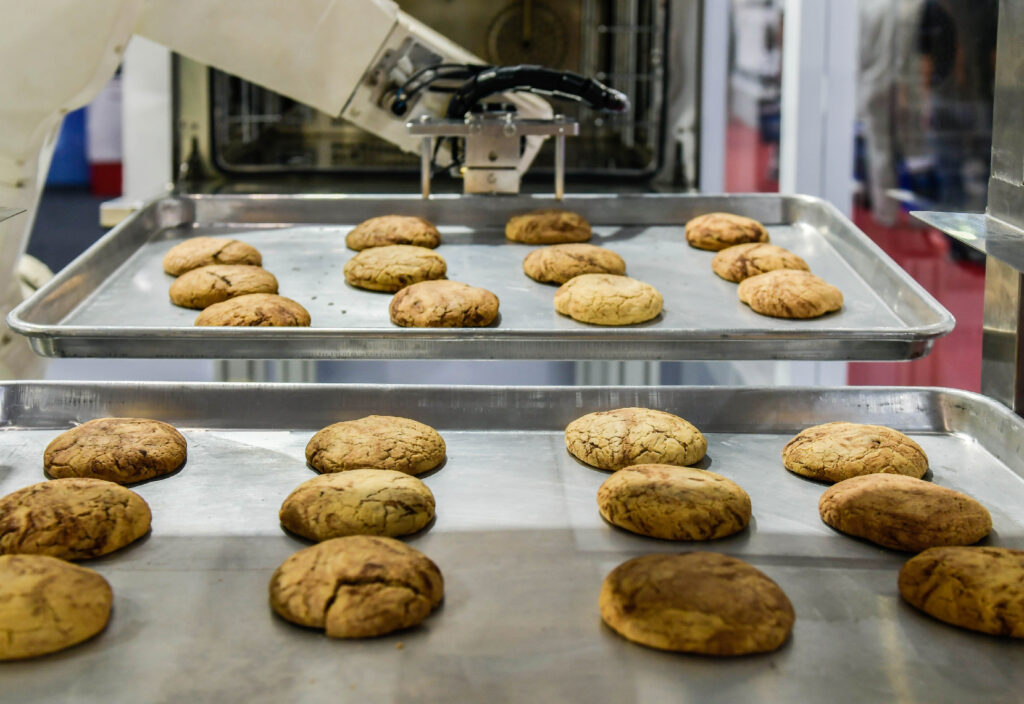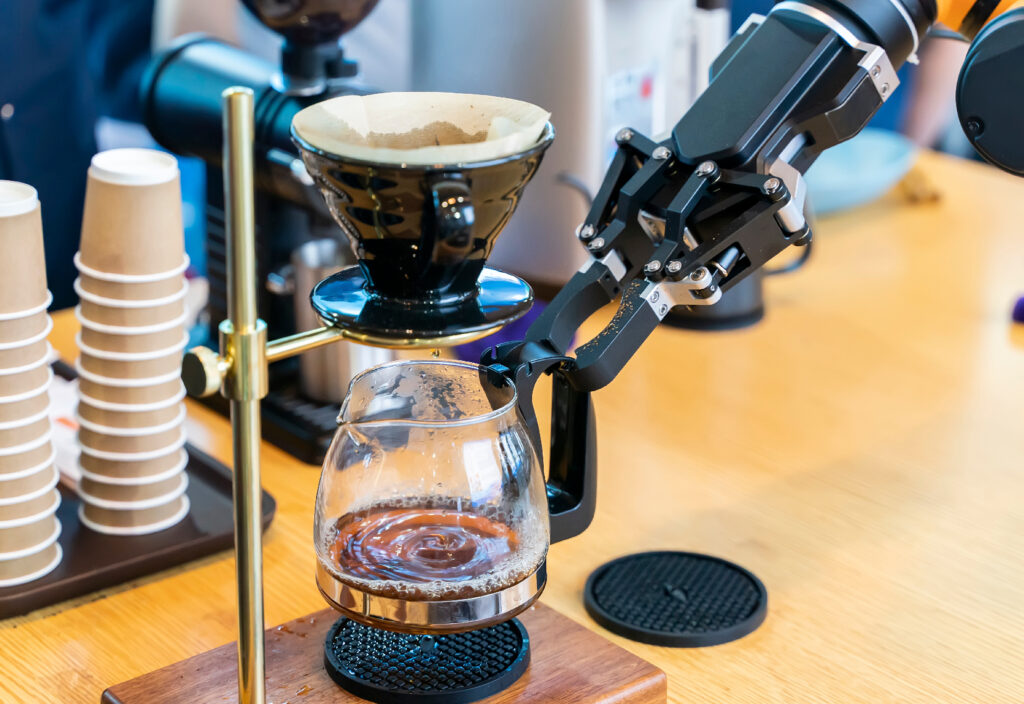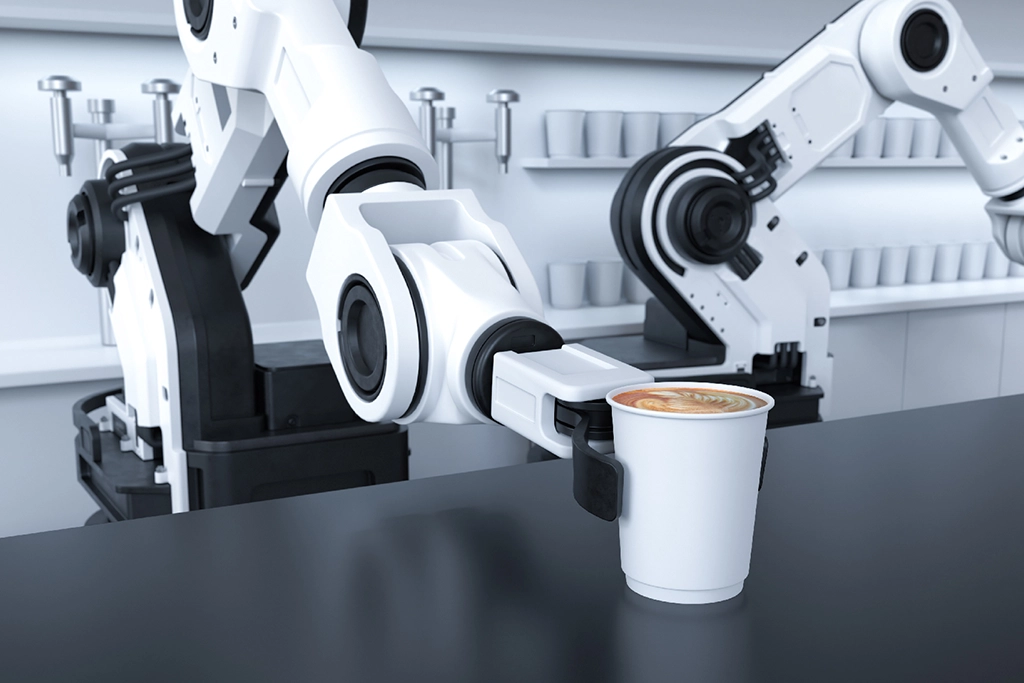Robotics play an indispensable role in the modern age; it is integrated into all industries and is changing the way things are run, forever. The food industry has been relatively slow to adopt technologies. However, as the demand for food continues to rise with the growth and aging of the global population, food suppliers are urged to find ways to cater to the high demand while maintaining and even improving food quality.
That said, robotics has started to make its way into every aspect of the food industry from agriculture and food processing to packaging and delivery. Not only that, but automation has also found its place in restaurant kitchens!
In this article, we dive into the different ways robotics is incorporated into the food industry as well as their advantages, challenges, and future.
What Is Robotics?
Robotics is a division of science and engineering that designs, develops, manufactures, and operates robots. These robots are intelligent machines that are designed to perform different kinds of tasks. Robots come in different shapes, forms, and sizes and their level of intelligence and sophistication may vary.
The Uses Of Robotics In The Food Industry

1- Agriculture
A report published by Fior Markets estimated that the agriculture drone market will grow from 1.5 billion USD in 2019 to a staggering 10.5 billion USD by 2027. The applications of robotics in this sector include planting, weeding, and harvesting as well as monitoring and analyzing crops. As for livestock farming, robotics are used for feeding, milking, egg collection, and sorting, as well as cleaning.
2- Food Processing
The use of robots in food processing operations is more effective, efficient, and sanitary than the employment of human labor force. Robots can produce large quantities of products in a short period of time and they ensure product quality and safety.
Meat Processing: The use of robots in meat processing is growing mainly because these operations are not best suited for humans. They include working in freezers, cutting carcasses, processing sausages, and deboning chickens.
Dairy Processing: In addition to automatic milking systems which improve cow health and increase milk production, robots are also used in cheese processing like stirring curds and slicing cheese.
3- Packaging
Food packaging is one of the earliest and most common uses for food-handling robots. It has been developed over the years to handle the whole packaging process. It can be split into 3 stages:
Primary packaging: food is packed into a wrapper, a container, or a vacuum-sealed bag.
Secondary packaging: individual packages are grouped in a larger container.
Palletizing: Secondary packages are stacked for shipping by palletizing robots.
4- Robotics In The Kitchen
While this technology is still in its infancy stages when it comes to the restaurant industry, it is clear that it is growing steadily and we will inevitably witness its prosperity in the near future.
Just like self-ordering kiosks, robots are being integrated into the food service to provide more consistency and productivity and reduce labor costs, which can make up around 30% of cost. Although the costs of these automation technologies are high, it has been proven to be cost-effective in the long run. These robots perform a variety of tasks such as mixing, chopping, cooking, and serving customers. More sophisticated robots are made to perform functions like making pancakes, sushi, and noodles.
It is worthwhile to look into robotics and find the right kind for your restaurant to help you run it more efficiently.
5- Food Delivery
Starship Technologies developed a robotic delivery service allowing restaurants, bakeries, and other businesses to use robots for delivery. These robots are operated remotely and can carry up to 9 kilos. They are also equipped with alarms and cameras to prevent any theft attempts.
Now that we discussed the application of robotics in the food industry and its advantages in each area, let’s go through some of its disadvantages.
6- Customer Service
In addition to food delivery, restaurant owners are starting to adopt robots in customer service. These robots take cake of basic tasks, they save time thanks to their ability to answer multiple questions very quickly and they provide 24/7 support.
Disadvantages And Challenges
1- High initial investment
Let’s be real, investing in robotics for your business is costly. When you decide on adopting this technology, you should take into consideration all costs of industrial robots including initial price, installation, configuration, and maintenance, as well as costs related to keeping your robots safe from cyber threats.
2- Scarcity of experts
Automation is a fairly new technology in the industry, hence the scarcity of experts in the field. Finding people to take care of maintenance and programming can be challenging. Therefore you should take into account the investment you need to make to employ such expertise.
3- Layoffs
There is an understandable social concern that robots are stealing jobs from humans. Although robots require humans to operate, they certainly replace a big deal of that working force, forecasting losses of 20 million manufacturing jobs by 2030. Business owners are forced to lay off a substantial number of unneeded workers which can be stressful for both parties.
The Future Of Robotics In The Food Industry

When we look at the big picture, it becomes crystal clear that robots will take over in the future. It’s expected that in the next few decades, the food industry will be largely automated and smarter robots will be developed to better communicate with each other and humans.
According to the International Journal of Recent Technology and Engineering, the food industry is recorded to be among the industries in which intelligent robotics systems are likely to have substantial effects in the future.
Will this pivotal change be beneficial or menacing for humans? Only time will tell.
Conclusion:
Robotics comes with a bag full of advantages for commercial industries. They ensure better quality and consistency, maximize productivity and throughput, provide greater safety and reduce labor costs. As for the challenges they pose, it’s for you to decide whether or not this technology is worth the hefty initial investment and the moral burden of layoffs.
All that aside, it is fun to entertain the idea that at some point in the future, a robot will knock on your door and say: “here’s your pizza, sir”.



